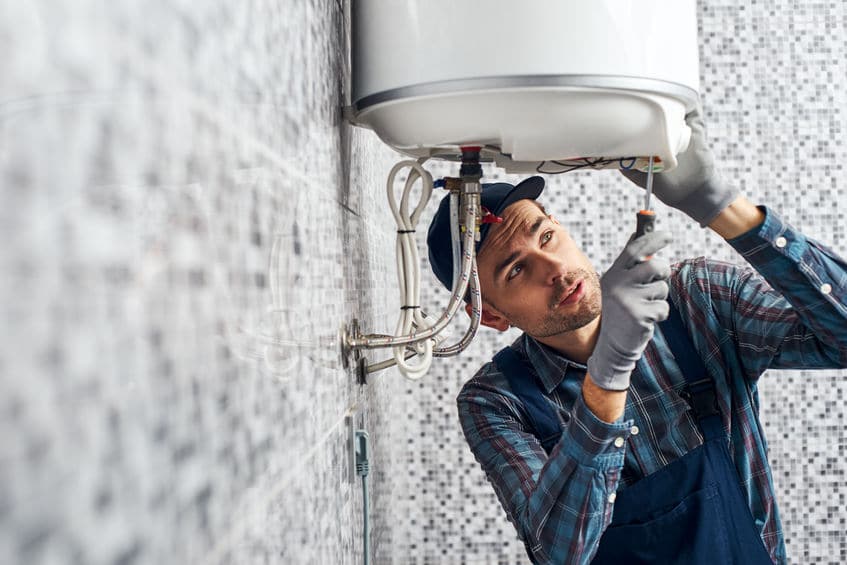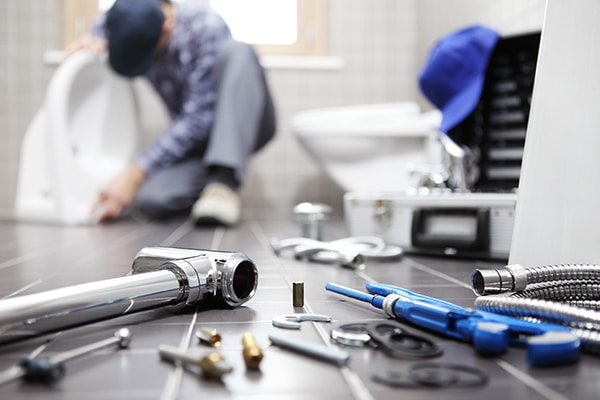Foreseeing Plumbing: Patterns and Breakthroughs
Foreseeing Plumbing: Patterns and Breakthroughs
Blog Article
Just how do you feel in relation to 7 Plumbing Industry Trends You Need To Know?

Intro
The pipes sector is undertaking a transformative phase driven by technical developments and expanding problems for sustainability and effectiveness. This article discovers emerging patterns and developments shaping the future of plumbing.
Governing Landscape
Regulative structures play a vital role fit the fostering of pipes technologies, with standards and codes controling everything from water efficiency to item security. As innovations remain to develop, regulative bodies must adapt to make certain customer defense and environmental stewardship.
Future Outlook
The future of pipes is characterized by proceeded development and assimilation with various other markets such as IoT, renewable energy, and structure automation. By accepting sustainable practices, leveraging emerging technologies, and prioritizing user-centric style, the pipes market is positioned to resolve the developing needs of society while decreasing its environmental impact.
Enhanced Fact in Pipes
Increased Fact (AR) technology is reinventing pipes by supplying specialists with real-time visual guidance for fixing and repair tasks. AR-enabled wise glasses or mobile applications overlay electronic info onto the physical environment, assisting plumbings picture pipeline layouts, identify concealed leakages, and perform fixings with accuracy.
Influence of 3D Printing
The advent of 3D printing has actually presented new possibilities in manufacturing pipes components. From custom-made components to elaborate pipeline fittings, 3D printing allows for fast prototyping and on-demand manufacturing, reducing lead times and enabling better modification in pipes layout.
Health And Wellness Qualities
In action to increased problems for health and wellness, pipes components are incorporating functions such as antimicrobial surfaces, touchless procedure, and self-cleaning mechanisms. These innovations not only improve health but also advertise individual convenience and comfort.
Hygiene-focused Components
Touchless taps, self-sanitizing bathrooms, and antimicrobial surfaces are coming to be significantly common in domestic and business setups, decreasing the danger of germ transmission and promoting a cleaner, healthier setting.
Water Top Quality Monitoring
Improvements in water top quality monitoring innovations allow home owners to keep track of the pureness and safety and security of their supply of water in real-time. Smart water top quality sensing units can detect contaminants, pH levels, and temperature level variants, encouraging users to take positive steps to ensure water safety.
Remote Pipes Services
Remote diagnostics and online assistance are changing the way plumbing solutions are supplied. With video conferencing and remote access technologies, plumbers can troubleshoot concerns, give advice for do it yourself repair services, and also execute remote evaluations, using greater access and ease to home owners.
Challenges and Opportunities
While pipes technologies hold enormous pledge, they also existing obstacles such as data personal privacy issues, governing compliance, and the demand for workforce training. Addressing these obstacles requires cooperation in between market stakeholders and regulative bodies to make certain safe and responsible execution of brand-new innovations.
Smart Pipes Systems
Including smart modern technology right into pipes systems makes it possible for remote surveillance, leakage detection, and automated maintenance. Smart sensors and IoT (Internet of Things) tools enable house owners and plumbers to keep track of water usage and spot problems in real-time, resulting in extra effective source monitoring and aggressive maintenance.
Water Effectiveness Solutions
With boosting emphasis on water preservation, ingenious services are being developed to reduce water waste in pipes systems. High-efficiency fixtures, greywater recycling systems, and smart watering controllers are amongst the modern technologies aiding consumers reduce their water impact while keeping comfort and convenience.
Lasting Products
The shift in the direction of sustainability reaches plumbing materials, with an expanding preference for environmentally friendly alternatives. Eco-friendly piping products, such as PEX (cross-linked polyethylene) and HDPE (high-density polyethylene), offer sturdiness and resistance to rust without endangering environmental integrity.
Anticipating Maintenance
Anticipating maintenance methods leverage information analytics and machine learning formulas to prepare for and avoid pipes concerns prior to they happen. By assessing historic data and performance metrics, anticipating maintenance formulas can recognize patterns and anomalies, enabling aggressive interventions to avoid expensive repairs and disruptions.
Conclusion
To conclude, the future of plumbing is defined by a convergence of technology, sustainability, and user-centric style. By welcoming clever options, sustainable products, and positive maintenance methods, the plumbing industry can boost efficiency, advertise safety, and add to a much more lasting future.
Plumbing Industry Trends You Need To Know
Smart technology in plumbing
Homeowners want to be able to manage their homes from their phones. The technology exists to make that happen. From smart toilets to leak detector devices, the whole plumbing system can be managed on an interconnected network made up of sensors, IoT devices, and machine learning algorithms.
This allows for wireless control to turn appliances on and off, automate routines, and access advanced monitoring to track water usage and flag potential issues. Smart technology streamlines water consumption, maintenance and energy usage, creating a more efficient system.
Green plumbing
The data analysis possible with smart technology not only improves convenience and cost-effectiveness but also fulfills a high-priority customer desire – sustainability. Consumers are very aware of their impact on the planet and want plumbing solutions to reduce damage and support sustainability. Eco-friendly plumbing solutions are already starting to emerge.
Customers can opt for low-flow toilets, water-saving faucets, and connections to sustainable energy sources. Beyond monitoring water consumption, customers can conserve water through the installation of greywater systems. This is a system that collects water that has been used but is still clean enough for some household uses such as toilet flushing.
Shorter product pipeline
To keep up with modern plumbing, plumbers need modern tools that enable them to complete jobs more efficiently. One technology making strides in this area is 3D printing. By 3D printing key plumbing fixtures, plumbers can reduce wait times even for specialized fixtures. It minimizes delays often seen in traditional manufacturing that frustrate customers and prevent plumbers from taking on more work.
Off-site repairs
Augmented reality is making a splash in many industries including plumbing. Plumbers can map a building online so they can explore the plumbing system through augmented reality, identifying areas of maintenance and repair completely digitally. This technology can be applied quite widely in plumbers’ work including planning installations and training new recruits. It’s safer, smarter and more efficient.
Low-footprint materials
Another way for plumbing companies to reduce their environmental footprint and meet the customer demand for sustainability is by using recycled materials in their work. The products they source and manufacture such as pipes, fixtures and faucets can be made from recycled materials. This saves the planet while being just as effective.
Onsite water purification
Additionally, plumbing companies can be advocates of water conservation and ease the financial and environmental concerns of customers by offering water purification systems. New water purification technology such as reverse osmosis systems and UV systems make it possible for homeowners and business owners to thoroughly cleanse water, removing contaminants onsite. This means the water can be safely reused in more ways than greywater can be, establishing a water recycling loop.
Tankless water heaters
Another innovation of modern plumbing is tankless water heaters. The idea is that the water is heated on demand as it runs through the system instead of being heated in a water tank. This is more energy efficient and therefore cost-effective and eco-friendly because water isn’t heated needlessly.

As an avid person who reads about 7 Plumbing Industry Trends You Need To Know, I thought sharing that piece of content was worthwhile. Those who enjoyed our page if you please remember to share it. I love reading our article about Innovative Plumbing Trends Transforming Construction.
Click Here Report this page